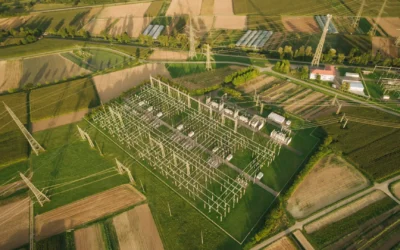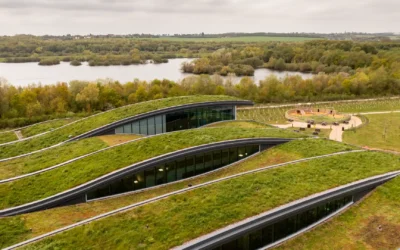- In 2020, coal production in the U.S. declined 24% year over year accounting for the lowest coal production since 1965 (per .
- Electricity generated from renewables has been growing and surpassed generation from coal in 2020.
- President Biden has set a target to install 30 GW of offshore wind power capacity in U.S. waters by 2030.
- For the U.S. to achieve offshore generation goals, HVDC transmission is imperative as it provides a highly efficient alternative to HVAC transmission.
The U.S. grid is dominated by the AC transmission network and lags behind China and Europe in HVDC transmission systems. Electricity interconnections are largely absent therefore energy produced in one region will usually stay in that region because of transfer constraints associated with AC transmission especially over the vast geographical spread of the U.S. Secondly, there are political and bureaucratic constraints, for instance right of way and environmental approvals, which has marred the progress of HVDC projects.
In this article we will be discussing generation trends, President Biden’s energy policy and how clean energy targets will require changes in the existing electrical transmission system of the U.S.
Generation Trends in U.S.
Production of coal has been on the decline for years, largely due to the reduction in the demand of coal for electricity generation. According to the U.S. Energy Information Administration (EIA), in 2020, the U.S. produced 535 million short tons (MMst) of coal. This is a 24% decline, year over year and is the lowest level of coal production in any year since 1965. See, figure 1, for details on the annual U.S. coal production from 1950-2020.

Figure 1: Annual US coal production (1950-2020).
Source: US Energy Information Administration.
In 2020, the total electricity generated by renewables, surpassed that of coal. Electricity generation from coal decreased from 965 billion kWh in 2019 to 775 billion kWh in 2020 while electricity generated from renewables increased from 728 billion kWh in 2019 to 792 billion kWh in 2020.
As renewable electricity generation increased, generation from natural gas also increased to cover the intermittent nature of renewable generation. Hence, electricity generation from natural gas in the U.S. increased from 1,586 billion kWh in 2019 to 1,617 billion kWh in 2020. Figure 2, shows the details on the U.S. electricity generation by major energy source from 1950-2020.

Figure 2: US electricity generation by major energy source, 1950-2020.
Source: US Energy Information Administration.
President Biden’s Energy Policy
President Biden has set a target of generating 80% electricity from renewable resources by 2030 and 100% electricity generation from renewables by 2035. This rapid transition from conventional electricity to renewables is estimated to cost around USD 342 billion including capital and maintenance costs. One study, made by the Clean Energy Futures Project, a multi-institutional research initiative which includes Harvard, Georgia Institute of Technology and Syracuse University, found that over the period of 2020-2050, the savings in fuel costs offset most of the cost of capital. The climate benefits of this energy transition account for USD 637 billion and are expected to outweigh the cost of the energy transition.
To realize these goals Biden has pledged 2 trillion dollars investment over four years which includes allocation for wind, solar and battery storage projects setting the U.S. on the path to meet its climate goals, and achieving an emissions-free power sector by 2035 and carbon neutrality by 2050.
Changes to the Existing Transmission System
Regardless of the energy policy and the renewable generation targets set by Biden, the existing transmission infrastructure in the U.S. is dominated by AC and currently is not capable of incorporating intermittent renewable resources to the extent required. Aware of the needed electric grid improvements, Biden’s administration will create an investment tax credit focused on electric transmission, as well as permitting changes to promote the siting of new power lines along roads and railways.
The Electric Power Infrastructure Improvement Act will provide a 30% Investment Tax Credit for select transmission projects in the country. Transmission projects that qualify for the tax credit will also include HVDC transmission projects encouraging the construction of some 20 GW of high-voltage capacity power lines that should be built by Dec. 31, 2031.
Several HVDC projects are ongoing, but with the focus on renewable generation, these transmission projects may get the needed impetus to be completed. These projects include:
- The New England Clean Energy Connect, a partnership between Hydro-Quebec and Avangard, which will transport 1,200 MW of hydropower from Canada into the New England power grid (145 miles of HVDC).
- The SOO Green HVDC link a project that will install HVDC transmission cables underground alongside existing railroad infrastructure. It is a 350-mile, 2100 MW 525 KV high voltage direct current transmission line from Iowa to Illinois, connecting MISO in the Midwest and PJM in the east.
- The TransWest Express is a 600kV transmission system delivering wind power from Wyoming to Las Vegas, Nevada (730 miles).
- Clean Path New York will deliver solar and wind power generated in upstate New York to New York City via a 265 mile,1,300 MW HVDC transmission line.
Offshore Wind Targets and Transmission Requirement
The Biden administration announced a plan to deploy 30 GW of offshore wind power capacity in U.S. waters by 2030. This is roughly the same offshore wind generation capacity that already exists in of Europe. For the U.S. to achieve these offshore generation goals, HVDC transmission will provide a highly efficient alternative to HVAC transmission especially since:
- Fewer conductors are required in HVDC transmission as compared to HVAC, resulting in lower costs
- Cables with XLPE insulation are lighter in weight
- which in turn makes it easier to transport
- reduces installation time
- reduces the number of cable joints which reduced the risk of failure as well
Looking Ahead
For the U.S. to achieve net carbon neutrality by 2050 the country will need to tap to renewable energy resources, and these are usually far away from population centers. The U.S. electricity grid is currently dominated by a transmission system which is not capable of transmitting power over large distances therefore investment in HVDC transmission systems will be necessary. Policies, like tax credits to incentivize investment in transmission, will allow projects to move forward and the benefit will be not only the efficient transmission of power but the increase of overall flexibility and resilience of the power system across the U.S.
Service Overview
More about our High Voltage Direct Current Market Research
Recent Insights
Sustainability Across Sectors: Highlights from GreenTech Festival 2024
Recently, I had the privilege to attend and present at the Greentech Festival, an excellent event in the realm of sustainability. This influential gathering left a profound impact, and I am delighted to share a comprehensive analysis of my experiences. The Greentech...
HVDC as the Backbone of Offshore Wind Expansion in the North Sea
This infographic discusses how the expansion of offshore wind in the North Sea will drive the HVDC market in Europe.HVDC as the Backbone of Offshore Wind Expansion in the North SeaKey Trends in the HVDC MarketOffshore wind will drive HVDC deployment in the North Sea,...
Powering Europe’s Future: The Surge of Interconnected HVDC Networks
The European HVDC market is poised for significant growth as it aligns with the expansion of offshore wind projects. European countries are planning to add 70 GW of offshore wind. The European Commission has set forth ambitious objectives, aiming to double...
US and EU Strategies in Smart Buildings
Download Service Overview The EU and USA aim to decarbonize their building sectors to meet emission reduction targets. Initiatives like the Home Energy Rebate Program in the USA and the revised Energy Performance of Buildings Directive (EPBD) in the EU offer roadmaps...



